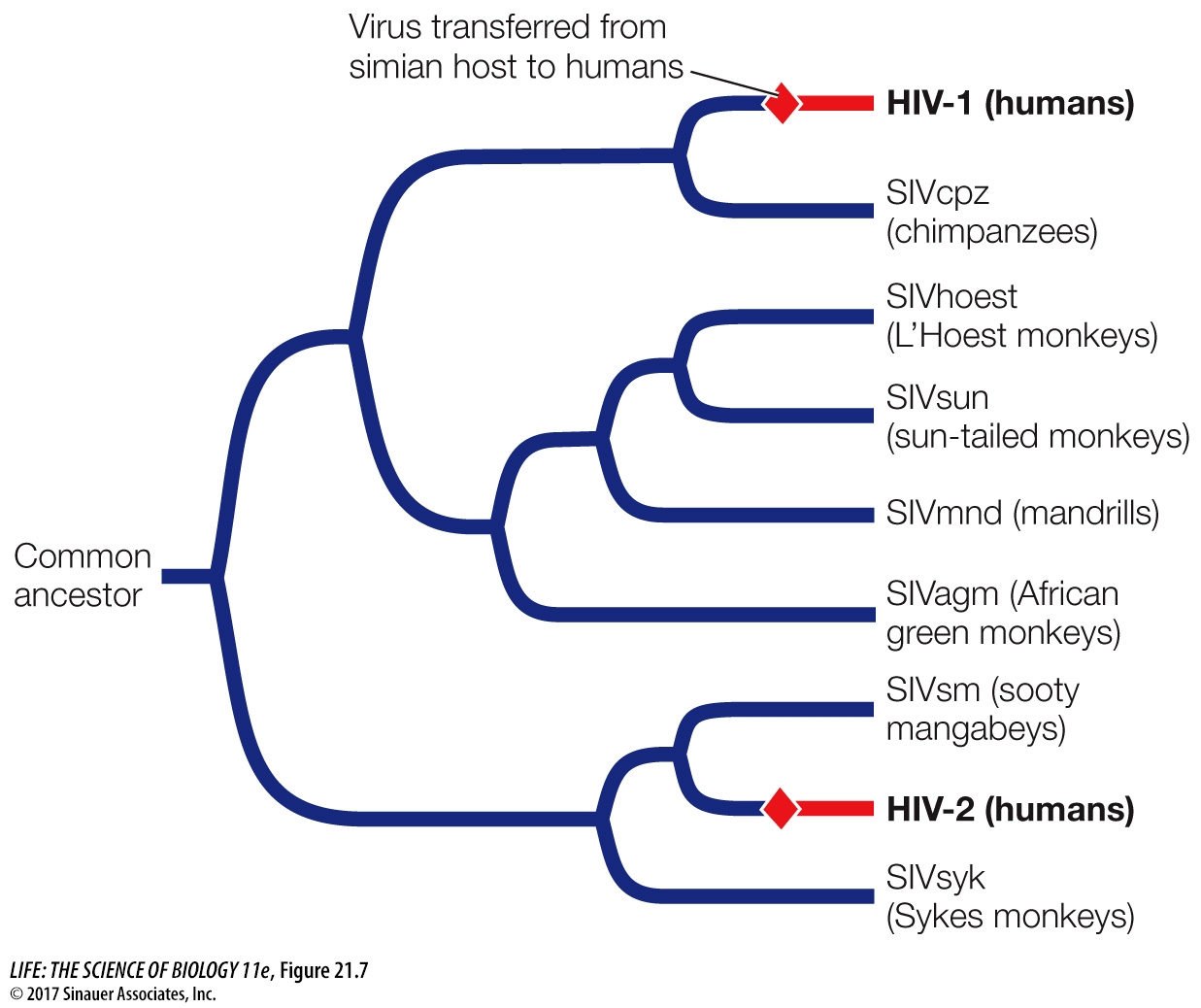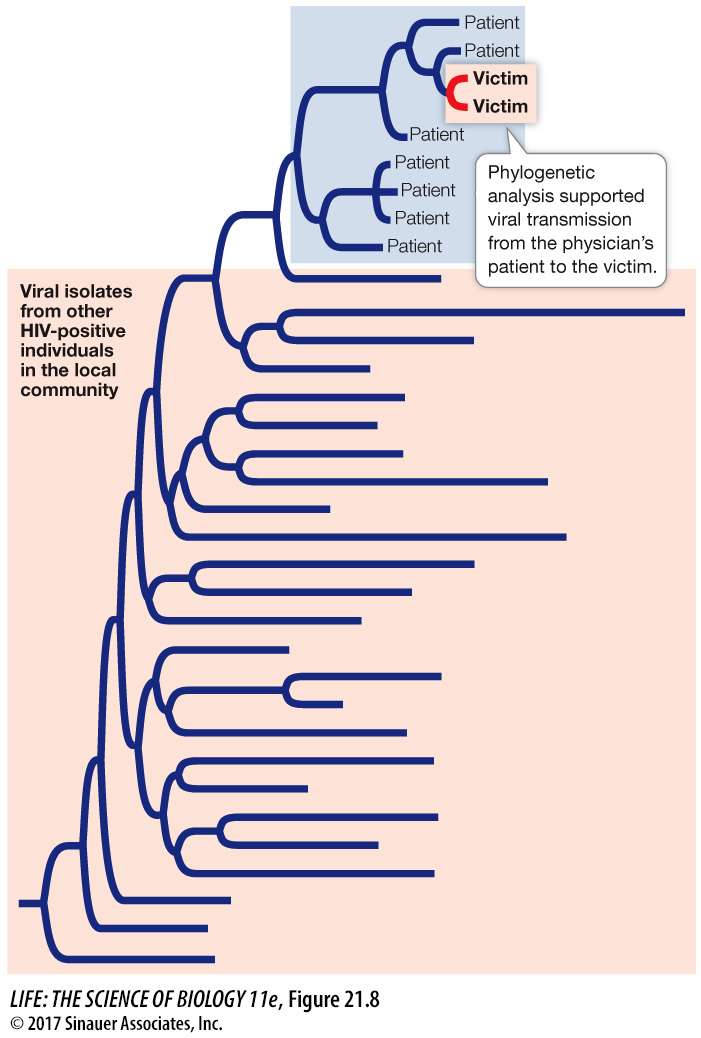Phylogenetic trees can be used to reconstruct past events
Reconstructing past events is important for understanding many biological processes. In the case of zoonotic diseases (diseases caused by infectious organisms transmitted to humans from another animal host), it is important to understand when, where, and how the disease first entered a human population. Human immunodeficiency virus (HIV) is the cause of such a zoonotic disease, acquired immunodeficiency syndrome, or AIDS. Phylogenetic analyses have become important for studying the transmission of viruses such as HIV. Phylogenies are also important for understanding the present global diversity of HIV and for determining the virus’s origins in human populations. A broader phylogenetic analysis of immunodeficiency viruses shows that humans acquired these viruses from two different hosts: HIV-1 from chimpanzees, and HIV-2 from sooty mangabeys (Figure 21.7).

Figure 21.7 Phylogenetic Tree of Immunodeficiency Viruses The evolutionary relationships of immunodeficiency viruses show that these viruses have been transmitted to humans from two different simian hosts: HIV-1 from chimpanzees and HIV-2 from sooty mangabeys. (SIV stands for simian immunodeficiency virus.)
HIV-1 is the common form of the virus in human populations in central Africa, where chimpanzees are hunted for food, and HIV-2 is the common form in human populations in western Africa, where sooty mangabeys are hunted for food. Thus it seems likely that these viruses entered human populations through hunters who cut themselves while skinning chimpanzees and sooty mangabeys. The global pandemic of AIDS occurred when these infections in local African populations rapidly spread through human populations around the world.
In recent years, phylogenetic analysis has become important in forensic investigations that involve viral transmission events. For example, phylogenetic analysis was critical for a criminal investigation of a physician who was accused of purposefully injecting blood from one of his HIV-positive patients into his former girlfriend in an attempt to kill her. The phylogenetic analysis revealed that the HIV strains present in the girlfriend were a subset of those present in the physician’s patient (Figure 21.8). Other evidence was needed, of course, to connect the physician to this purposeful transmission event, but the phylogenetic analysis was important to support the viral transmission event from the patient to the victim.

Figure 21.8 A Forensic Application of Phylogenetic Analysis This phylogenetic analysis demonstrated that strains of HIV present in a victim (shown in red) were a phylogenetic subset of viruses isolated from a physician’s patient (shown in blue). This analysis was part of the evidence used to show that the physician drew blood from his HIV-positive patient and injected it into the victim in an attempt to kill her. A jury found the physician guilty of attempted murder.
Question
Q: What hypothetical phylogenetic results could have exonerated the physician?
If the HIV sequences from the victim had been found to be more closely related to those of any other HIV-positive individuals in the local community than they were to those of the physician’s patient, then the phylogeny would be inconsistent with the alleged crime, and the results could have been used to exonerate the physician.

